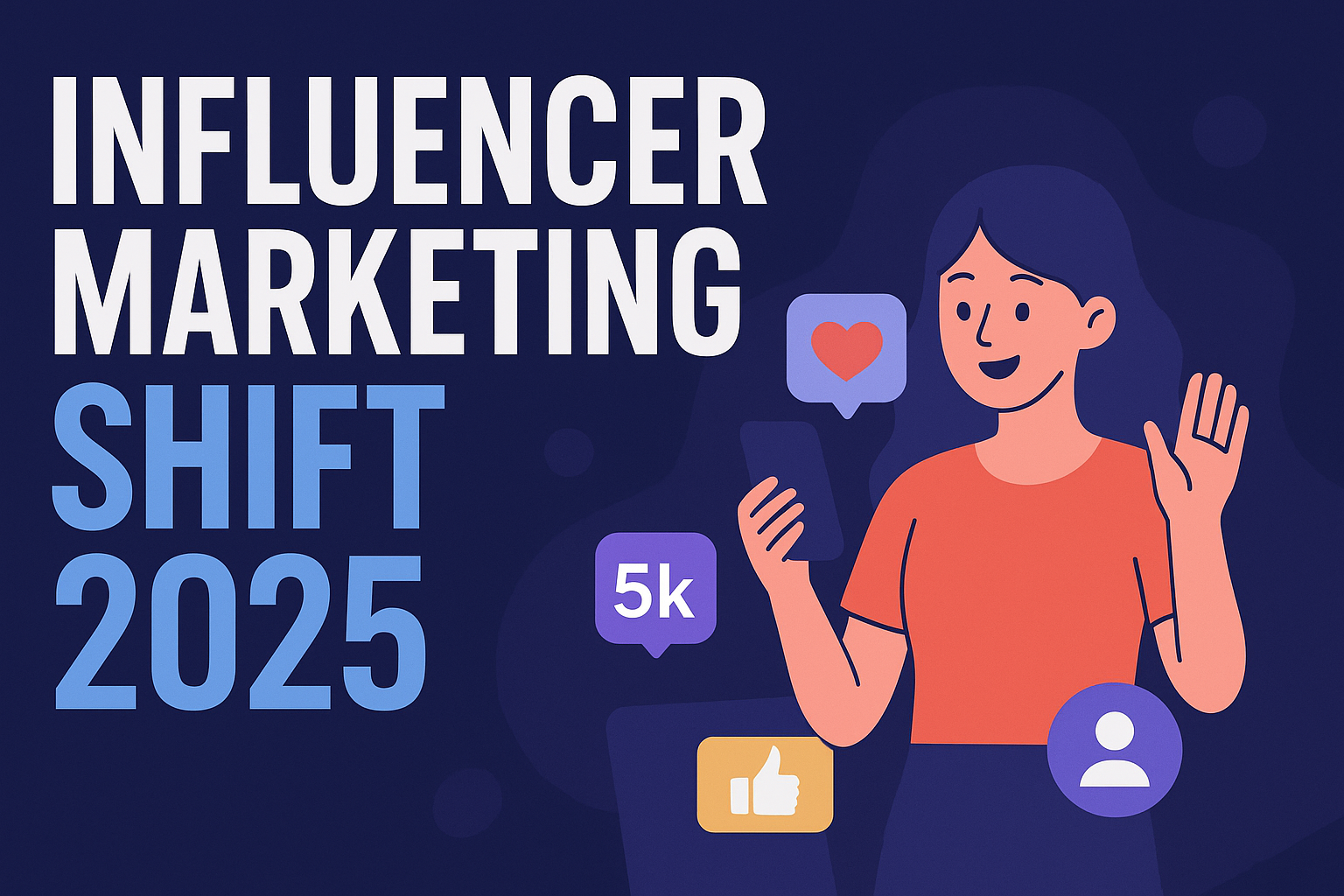
Influencer Marketing Shift 2025 –The New Face of Influencer Marketing
Influencer Marketing Shift 2025 has evolved dramatically in recent years. In 2025, the spotlight is shifting from celebrity influencers and big-name creators to smaller, more authentic personalities — nano and micro influencers. This shift reflects a broader marketing transformation: audiences crave genuine connections, real stories, and trust over sheer reach.
Today, businesses are realizing that bigger isn’t always better when it comes to influencer partnerships. The focus is on engagement, relevance, and authenticity — all of which nano and micro influencers deliver far more effectively than macro ones.
Understanding the Shift in Influencer Marketing Dynamics
The shift from macro to micro and nano influencers marks a critical evolution in digital marketing strategies. While macro influencers — typically those with 100K to 1M followers — still have massive reach, brands have discovered that engagement rates often drop as follower counts rise.
Influencer Marketing Shift 2025 -Nano (1K–10K followers) and micro (10K–100K followers) influencers, however, maintain strong, personal relationships with their audiences. Their content feels authentic, their recommendations are trusted, and their influence is more community-driven than commercial.
According to 2025 social data, micro influencers generate up to 60% higher engagement per post compared to macro influencers, making them far more cost-effective and credible partners for brands.
Why Brands Are Prioritizing Nano and Micro Influencers in 2025
The reasons behind this strategic shift are rooted in performance metrics, cost-efficiency, and authenticity.
- Higher Engagement Rates: Smaller creators often have niche communities that actively interact, comment, and share — driving organic visibility.
- Authenticity Over Glamour: Audiences see nano and micro influencers as “real people,” not advertisers. Their recommendations feel more genuine.
- Cost-Effective Campaigns: Collaborating with multiple micro influencers can yield better ROI than one large influencer campaign.
- Localized Reach: Small influencers often target regional or interest-based audiences, which helps brands enter micro-markets.
This change also reflects the evolution of social media algorithms, which now favor engagement over sheer follower count — amplifying the power of micro creators.
Macro Influencers Still Matter — But Differently
While nano and micro influencers dominate the trust game, macro influencers still hold value for large-scale brand awareness campaigns. Their wide reach can help in product launches, high-visibility partnerships, or global events.
However, brands are now blending both tiers strategically — pairing macro influencers for exposure with micro creators for engagement. This hybrid influencer strategy is one of the top trends in digital marketing for 2025.
The Role of AI and Data in Influencer Selection
As influencer marketing grows, AI-driven analytics tools now play a crucial role in identifying the right creators. Instead of choosing influencers based solely on follower counts, brands are analyzing audience authenticity, niche alignment, engagement quality, and sentiment analysis.
AI also helps track campaign ROI, measure engagement patterns, and prevent fake follower fraud — ensuring collaborations deliver measurable impact.
Tools like Upfluence, AspireIQ, and Influencity have made influencer discovery more data-driven, ensuring brands partner with voices that truly align with their audience.
Case Studies: Brands Winning with Micro and Nano Influencers
- Glossier: Built its entire community-based marketing strategy using micro-influencers who share honest reviews and lifestyle content.
- Daniel Wellington: Used thousands of small influencers instead of celebrities to achieve global brand recognition.
- Local D2C Brands in India: Skincare and fashion startups are leveraging regional nano influencers on Instagram and YouTube Shorts to reach Tier-2 and Tier-3 markets effectively.
These success stories highlight a common theme — community trust beats mass promotion in the influencer marketing era of 2025.
Building a Successful Micro Influencer Strategy
To create a winning influencer marketing plan, brands must focus on long-term relationships, transparent collaborations, and consistent communication.
Influencer Marketing Shift 2025 –Identify the Right Influencers for Your Brand
Look for influencers who align with your brand’s values and audience demographics. Engagement quality is more important than total followers.
Co-Create Authentic Content
Encourage influencers to produce content in their own voice and style. Authentic storytelling resonates more with audiences than scripted promotions.
Measure Engagement and Conversions
Track key metrics such as CTRs, engagement rates, comments, and conversion data. Platforms like Google Analytics and Meta Insights can help measure influencer impact.
Build Long-Term Partnerships
Brands that collaborate with influencers over multiple campaigns see higher trust and loyalty among followers. Ongoing partnerships create consistent brand awareness.
The Future of Influencer Marketing in 2025 and Beyond
The future of influencer marketing will be community-driven, AI-powered, and authenticity-focused. As digital ecosystems evolve, brands that invest in genuine voices and localized influence will thrive.
Nano and micro influencers represent the human touch in a tech-driven world — bringing authenticity, relatability, and connection that algorithms can’t replicate.
In 2025, successful marketing isn’t about reaching everyone — it’s about reaching the right ones.
